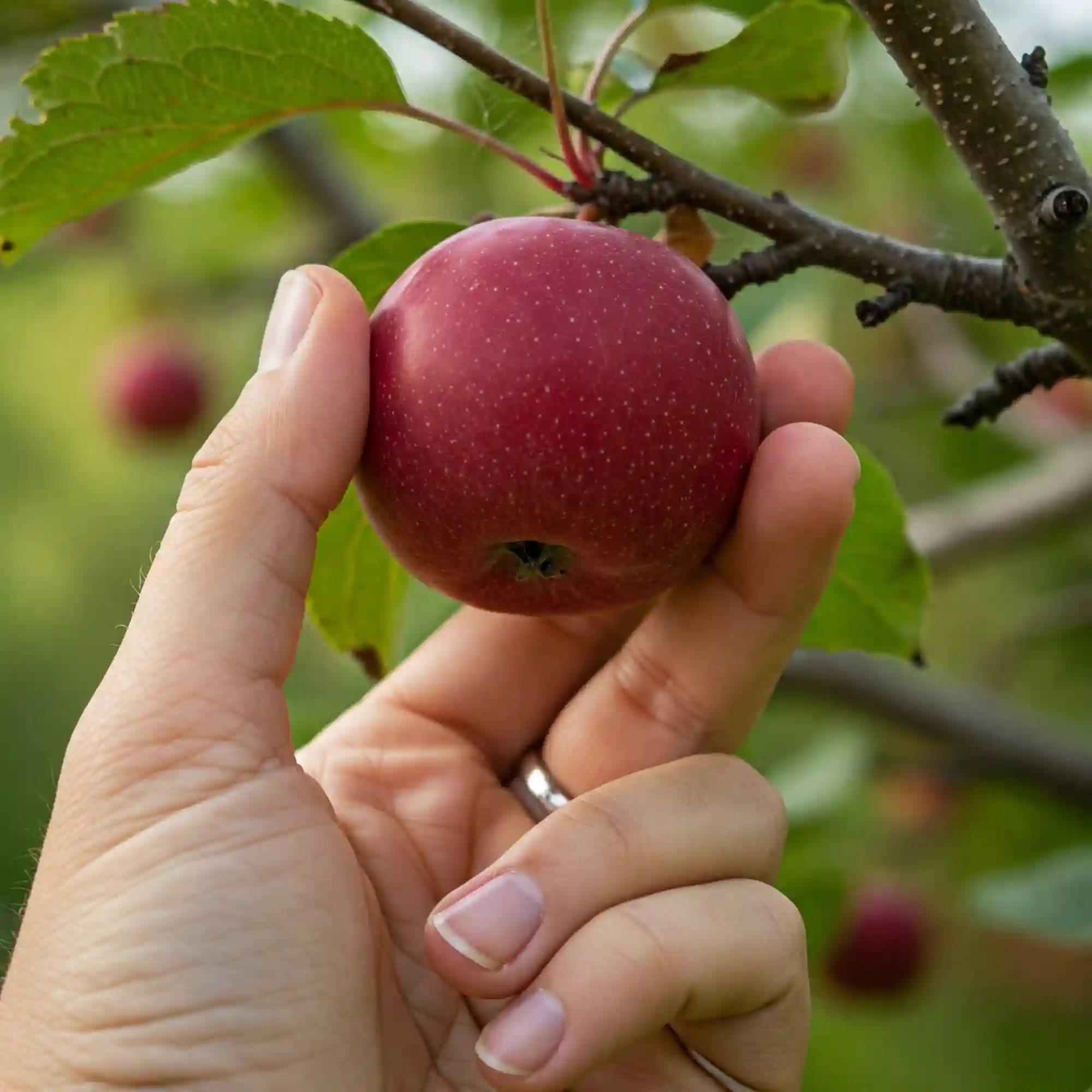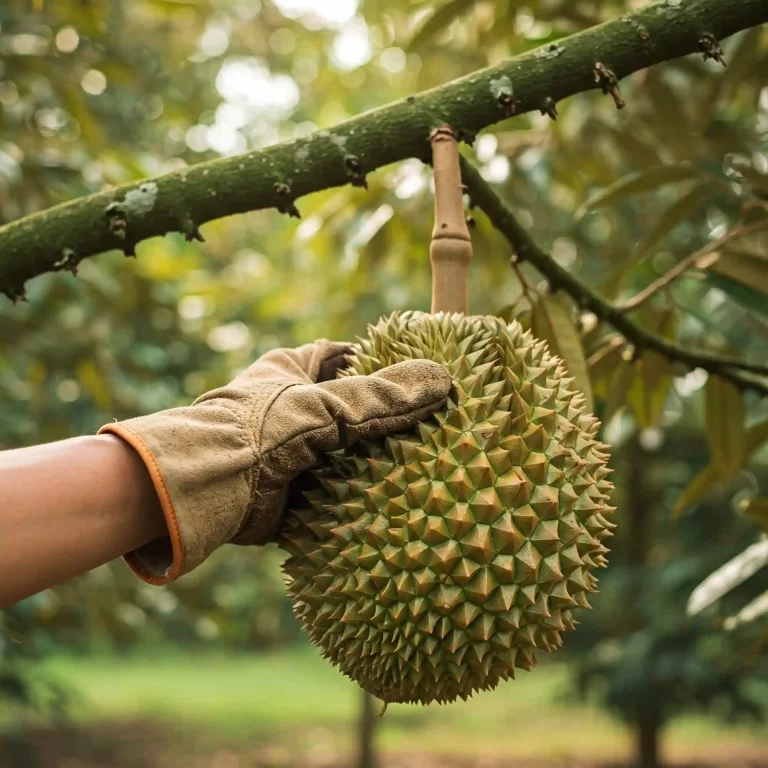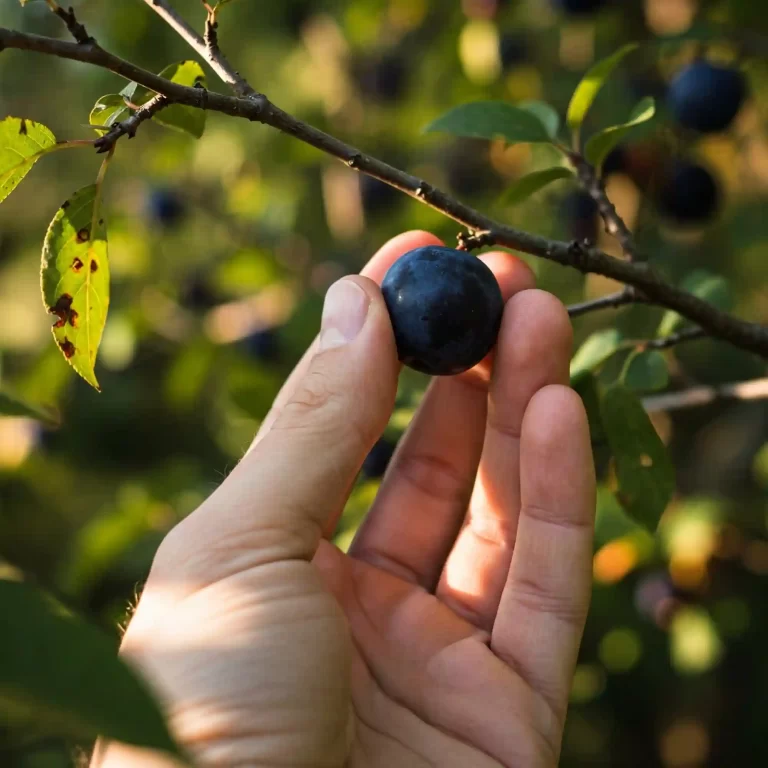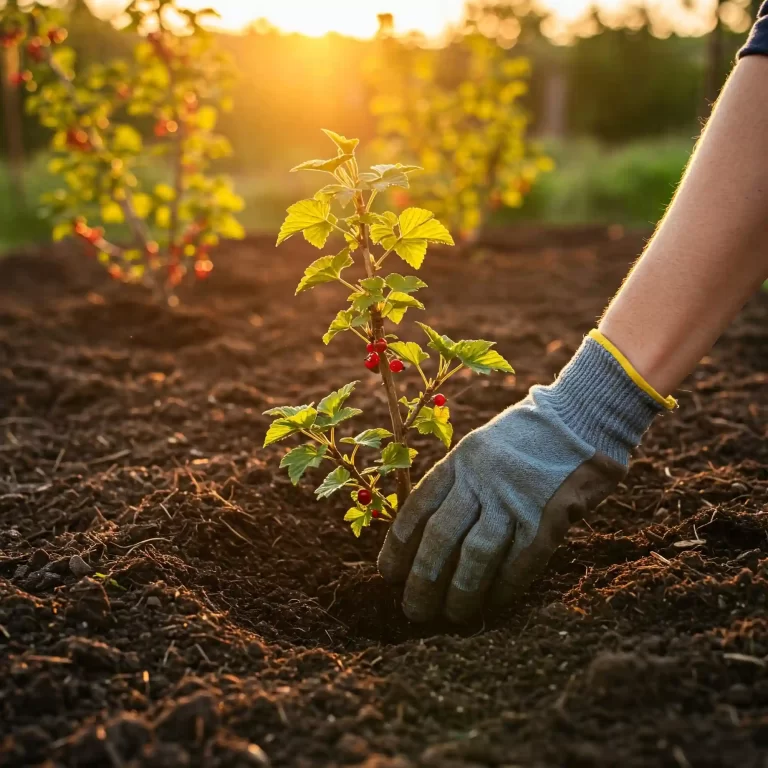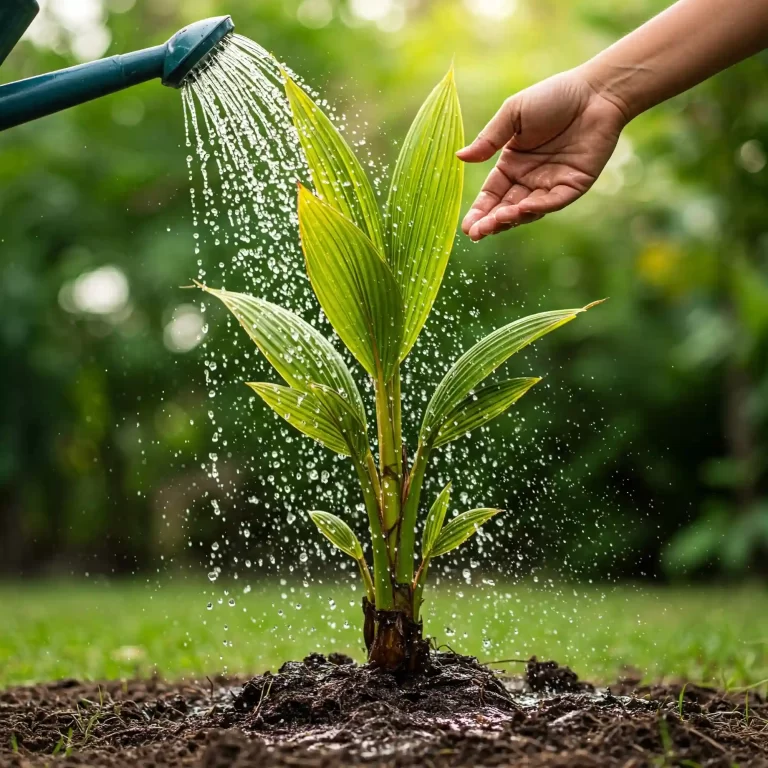Are you dreaming of vibrant, tart crab apples hanging heavy on your trees, ready for pies, jellies, and cider? The problem is, you’ve tried before, and either the trees didn’t thrive, or the harvest was disappointingly small. It’s frustrating to invest time and effort only to see your gardening dreams fall flat, isn’t it? You might be wondering, “What am I doing wrong?” Let me tell you, you’re not alone. I’ve been there, too, struggling with crab apple trees that seemed determined to resist my efforts. But I’ve learned, through trial and error, and a lot of research, that growing crab apples successfully comes down to understanding a few key secrets. And I’m here to share those secrets with you, so you can enjoy a bountiful harvest and experience the joy of growing your own delicious crab apples.
Choosing the Right Crab Apple Variety
When it comes to growing crab apple fruits, your journey begins with selecting the right variety. You might think all crab apples are created equal, but that couldn’t be further from the truth. The variety you choose will significantly impact your success, from pollination requirements to fruit size and disease resistance.
- Self-Fertility vs. Cross-Pollination:
- Some crab apple varieties, like the ‘Dolgo,’ are self-fertile. This means they can pollinate themselves and produce fruit without needing another crab apple tree nearby. This is especially useful if you have limited space.
- However, many varieties require cross-pollination. This means you’ll need to plant at least two different crab apple varieties that bloom at the same time to ensure successful fruit production. For example, ‘Centennial’ and ‘Siberian’ varieties are excellent pollinators for many other crab apple trees.
- Fruit Characteristics:
- Consider the size, color, and taste of the fruit. Some varieties are known for their small, tart fruits, ideal for jellies and preserves. Others produce larger, sweeter fruits that are better for eating fresh.
- For example, the ‘Red Splendor’ crab apple offers stunning red fruits that add both beauty and flavor to your garden.
- Disease Resistance:
- Crab apple trees can be susceptible to diseases like apple scab and fire blight. Choosing disease-resistant varieties can save you a lot of trouble.
- ‘Prairie Fire’ is a popular choice for its excellent disease resistance and beautiful spring blossoms.
- Hardiness Zones:
- It’s crucial to select varieties that are suitable for your specific climate zone. The USDA hardiness zones provide a guide to which plants will thrive in your area. For instance, if you live in a colder climate, you’ll want to choose varieties that are hardy in zones 3 or 4.
- Growth Habits:
- Consider the mature size and growth habit of the tree. Some varieties are dwarf, ideal for smaller gardens, while others grow into large, spreading trees.
Popular Crab Apple Varieties and Their Characteristics
| Variety | Fruit Size | Fruit Color | Taste | Pollination | Disease Resistance | Hardiness Zones |
| Dolgo | Small | Red | Tart | Self-Fertile | Moderate | 2-7 |
| Centennial | Medium | Yellow-Red | Sweet-Tart | Needs Pollinator | Good | 3-8 |
| Siberian | Small | Yellow-Red | Tart | Needs Pollinator | Good | 2-6 |
| Prairie Fire | Small | Red-Purple | Tart | Needs Pollinator | Excellent | 3-8 |
| Red Splendor | Medium | Red | Sweet-Tart | Needs Pollinator | Good | 4-8 |
Case Study:
I remember when I first started growing crab apples, I planted a single ‘Siberian’ tree, thinking it would produce a good harvest. However, I soon learned that ‘Siberian’ requires a pollinator. After adding a ‘Centennial’ tree to my garden, I saw a significant increase in fruit production. This experience taught me the importance of understanding the specific needs of each variety.
Key Considerations:
- Soil pH: Crab apples prefer a soil pH between 6.0 and 7.0.
- Sunlight: They need at least 6 hours of direct sunlight per day.
- Space: Provide adequate space for the mature size of the tree.
Expert Quote:
“Choosing the right crab apple variety is the foundation of a successful harvest. Consider your specific needs and climate to select the perfect trees for your garden.” – Dr. Emily Carter, Horticultural Expert.
By carefully considering these factors, you can select the perfect crab apple variety for your garden, ensuring a bountiful harvest for years to come.
Ideal Planting Conditions for Crab Apple Trees
Just as humans thrive in certain environments, crab apple trees flourish under specific conditions. Understanding these ideal conditions is paramount to ensuring the health and vitality of your young tree. Let’s explore the key factors that contribute to a thriving crab apple tree:
Sunlight: The Fuel for Growth
Crab apple trees are sun-loving plants. They require ample sunlight to photosynthesize efficiently and produce a bountiful harvest. Ideally, your chosen planting site should receive at least six hours of direct sunlight per day. While some dappled shade is tolerable, prolonged periods in deep shade can lead to weak growth, reduced fruit production, and increased susceptibility to diseases.
Soil: The Foundation for Healthy Growth
The soil composition plays a crucial role in the overall health and vigor of your crab apple tree. Here are some key considerations:
- Well-Drained Soil: Crab apple trees do not tolerate waterlogged soil. Poor drainage can lead to root rot, a serious condition that can weaken or even kill the tree. If your soil tends to be heavy clay, consider amending it with organic matter like compost or sand to improve drainage.
- Soil pH: Crab apples prefer slightly acidic to neutral soil with a pH between 6.0 and 7.0. You can test your soil pH using a home soil test kit available at most garden centers. If your soil is too acidic, you can raise the pH by adding lime. Conversely, if your soil is too alkaline, you can lower the pH by adding sulfur.
- Soil Fertility: While crab apples are not particularly demanding in terms of soil fertility, enriching the soil before planting can benefit the young tree. Incorporating organic matter like compost or well-rotted manure into the planting hole provides essential nutrients for healthy root development.
Climate Considerations: Adapting to Local Conditions
Crab apple trees exhibit varying degrees of cold hardiness. It’s essential to select varieties that are well-suited to your specific climate zone. The USDA Plant Hardiness Zone Map provides valuable information about the average annual minimum winter temperature in your region. Choosing varieties that are hardy in your zone ensures they can withstand the winter cold and thrive in your local conditions.
Additional Considerations:
- Wind Protection: While crab apple trees can tolerate some wind, strong winds can damage branches and reduce fruit production. Consider planting your tree in a sheltered location, such as near a fence or building, to provide some protection from strong winds.
- Avoidance of Low-Lying Areas: Planting in low-lying areas where cold air tends to pool can increase the risk of frost damage. Choose a well-drained site on higher ground to minimize the risk of frost damage.
By carefully considering these factors, you can create the ideal planting conditions for your crab apple tree, setting the stage for a healthy and productive tree that will bring you joy for years to come.
Planting Your Crab Apple Tree: A Step-by-Step Guide
Now that you’ve selected the perfect crab apple variety and prepared the ideal planting site, it’s time to get your hands dirty and plant your tree! Proper planting techniques are essential to ensure the tree establishes a strong root system and thrives in its new home. Follow these steps for a successful planting:
1. Digging the Hole:
- Begin by digging a hole that is slightly wider and deeper than the root ball of your crab apple tree. A general rule of thumb is to dig a hole that is two to three times the width of the root ball.
- As you dig, remove any large rocks or debris that may hinder root growth.
2. Amending the Soil:
- If your soil is heavy clay, amend it with organic matter like compost or well-rotted manure. This will improve drainage and provide essential nutrients for the tree.
- Mix the organic matter thoroughly with the existing soil in the planting hole.
3. Placing the Tree:
- Carefully remove the tree from its container or burlap wrapping.
- Gently loosen any tightly compacted roots to encourage outward growth.
- Place the tree in the center of the hole, ensuring that the graft union (the point where the scion wood is grafted onto the rootstock) is slightly above ground level.
4. Backfilling the Hole:
- Begin backfilling the hole with the amended soil, filling in around the roots.
- Gently firm the soil around the base of the tree to eliminate air pockets.
- Avoid over-compacting the soil, which can restrict root growth.
5. Watering Thoroughly:
- After backfilling the hole, water the tree deeply to settle the soil and ensure good root contact.
- Continue to water regularly during the first growing season, especially during dry periods.
6. Mulching (Optional):
- aApplying a layer of organic mulch, such as wood chips or shredded bark, around the base of the tree can help conserve moisture, suppress weeds, and regulate soil temperature.
- Keep the mulch a few inches away from the trunk of the tree to prevent rot.
By following these steps carefully, you’ll provide your crab apple tree with the best possible start in its new home.
Essential Crab Apple Tree Care
Just like any living organism, your crab apple tree requires consistent care to thrive. Providing proper water, nutrition, and protection will ensure its health and vigor, ultimately leading to a bountiful harvest of delicious fruit.
Watering Wisely: A Balancing Act
Water is essential for the growth and development of your crab apple tree. However, overwatering can be as detrimental as underwatering. Here are some watering guidelines to keep in mind:
- Frequency: Water your newly planted tree deeply and regularly during the first growing season. As the tree establishes itself, you can gradually reduce watering frequency.
- Depth: Water deeply to encourage deep root growth. Aim to water the soil to a depth of 12 to 18 inches.
- Mulching: Applying a layer of organic mulch, such as wood chips or shredded bark, around the base of the tree can help conserve moisture and reduce the frequency of watering.
Fertilizing Your Tree: Providing Essential Nutrients
While crab apple trees are not heavy feeders, fertilizing young trees annually can promote healthy growth and fruit production.
- Timing: Fertilize your crab apple tree in early spring, before new growth begins.
- Type of Fertilizer: Use a balanced fertilizer formulated for fruit trees, such as a 10-10-10 ratio.
- Application: Apply the fertilizer according to the package directions, ensuring it is evenly distributed around the base of the tree.
Mulching: A Protective Layer
Mulching offers several benefits for your crab apple tree:
- Moisture Retention: Mulch helps to retain soil moisture, reducing the frequency of watering.
- Weed Suppression: Mulch suppresses weed growth, reducing competition for water and nutrients.
- Temperature Regulation: Mulch helps to moderate soil temperature, protecting the tree’s roots from extreme heat or cold.
Apply a layer of organic mulch, such as wood chips, shredded bark, or compost, around the base of the tree. Keep the mulch a few inches away from the trunk to prevent rot.
Additional Care Tips:
- Protect Young Trees from Rodents: Young trees are susceptible to damage from rodents. Use tree guards or wire mesh to protect the trunk from gnawing.
- Monitor for Pests and Diseases: Regularly inspect your tree for signs of pests and diseases. Take appropriate action to control any problems that arise.
- Winter Protection: In colder climates, protect young trees from winter injury by wrapping the trunk with burlap or tree wrap.
By providing consistent and appropriate care, you can ensure the health and vitality of your crab apple tree, setting the stage for a bountiful harvest of delicious fruit.
Pruning Your Crab Apple Tree: A Guide
Just as you trim your hair to maintain a healthy and attractive appearance, your crab apple tree benefits from regular pruning. Pruning is an essential practice that promotes tree health, improves fruit production, and maintains a desirable shape.
Timing is Everything: When to Prune
The optimal time for pruning your crab apple tree is during the dormant season, typically in late winter or early spring, before new growth begins. Pruning during this period minimizes the risk of disease and allows the tree to recover quickly.
Pruning Techniques: A Step-by-Step Approach
- Removing Dead, Diseased, and Damaged Wood: Begin by removing any dead, diseased, or damaged branches. These branches can harbor pests and diseases, and they detract from the overall health and appearance of the tree.
- Thinning the Canopy: Thinning the canopy involves removing some of the smaller branches to improve air circulation and sunlight penetration. This can help to prevent diseases and promote healthier fruit development.
- Creating a Central Leader: For young trees, it’s important to establish a strong central leader. This is the main vertical branch that will form the backbone of the tree. Remove any competing branches that may vie for dominance with the central leader.
- Heading Back Branches: To encourage branching and increase fruit production, you can head back some of the outer branches. This involves cutting back the tips of the branches by about one-third.
Pruning Tools and Safety:
- Sharp Pruning Shears: Use sharp, clean pruning shears to make clean cuts. Dull shears can crush branches and increase the risk of disease.
- Safety First: Always wear protective gloves and eye protection when pruning.
Additional Pruning Considerations:
- Water Shoots: Remove any water shoots that emerge from the trunk or main branches. These vigorous shoots can compete with the tree’s energy and reduce fruit production.
- Fruit Spur Development: Fruit spurs are short, stubby branches that produce fruit. Encourage the development of fruit spurs by pruning to promote branching.
By following these pruning guidelines, you can maintain the health and vigor of your crab apple tree, ensuring a bountiful harvest of delicious fruit for years to come.
Protecting Your Crab Apple Tree from Pests and Diseases
Just as we take precautions to protect our own health, it’s essential to safeguard your crab apple tree from potential threats. Pests and diseases can weaken the tree, reduce fruit production, and even cause significant damage. By implementing proactive measures and taking swift action when necessary, you can keep your crab apple tree healthy and thriving.
Common Pests:
- Aphids: These tiny, sap-sucking insects can infest leaves and buds, causing them to curl and distort.
- Codling Moths: The larvae of codling moths bore into the fruit, causing damage and reducing fruit quality.
- Scale Insects: These small, immobile insects attach to branches and leaves, sucking sap and weakening the tree.
Common Diseases:
- Apple Scab: This fungal disease causes dark, velvety spots on leaves and fruit, reducing photosynthesis and fruit quality.
- Fire Blight: This bacterial disease causes branches and blossoms to wilt and die, giving the appearance of fire.
Pest and Disease Control Strategies:
- Regular Monitoring: Regularly inspect your tree for signs of pests and diseases. Early detection is key to effective control.
- Cultural Practices:
- Proper Pruning: Pruning to improve air circulation and sunlight penetration can help to prevent fungal diseases.
- Watering: Avoid overhead watering, which can spread fungal spores. Water deeply and at the base of the tree.
- Sanitation: Remove and destroy any fallen leaves and fruit to reduce the overwintering sites for pests and diseases.
- Natural Pest Control:
- Encourage Beneficial Insects: Introduce beneficial insects, such as ladybugs and lacewings, to your garden. These natural predators can help to control aphid populations.
- Insecticidal Soap: Use insecticidal soap to control aphids and other soft-bodied insects.
- Disease Management:
- Fungicides: If necessary, apply fungicides to control fungal diseases like apple scab. Choose organic fungicides whenever possible.
- Pruning: Prune out any infected branches to prevent the spread of fire blight.
By implementing these strategies, you can effectively protect your crab apple tree from pests and diseases, ensuring its long-term health and productivity.
Pollinating Your Crab Apple Tree: Ensuring a Bountiful Harvest
Pollination is the crucial process that leads to the formation of fruit. In crab apple trees, this process involves the transfer of pollen from the male reproductive organs (stamens) to the female reproductive organs (pistils) of the flower. Successful pollination is essential for a bountiful harvest.
Self-Fertile vs. Cross-Pollination
Crab apple varieties can be broadly categorized into two groups based on their pollination requirements:
- Self-Fertile Varieties: These varieties are capable of self-pollination, meaning they can produce fruit even when planted alone. This is due to the presence of both male and female reproductive organs within the same flower. Examples of self-fertile varieties include ‘Dolgo’ and ‘Centennial.’
- Self-Sterile Varieties: These varieties require cross-pollination to produce fruit. This means that pollen from another compatible crab apple variety must be transferred to the flowers of the tree. Planting two or more compatible varieties that bloom simultaneously ensures successful pollination. Examples of self-sterile varieties include ‘Siberian’ and ‘Red Splendor.’
Attracting Pollinators:
Whether your crab apple variety is self-fertile or self-sterile, attracting pollinators to your garden can significantly enhance fruit production. Here are some strategies to attract pollinators:
- Plant Pollinator-Friendly Flowers: Include a variety of flowering plants that attract bees, butterflies, and other pollinators. Some excellent choices include sunflowers, bee balm, and lavender.
- Provide Nesting Sites: Create nesting sites for bees and other beneficial insects by leaving patches of bare ground or providing nesting boxes.
- Avoid Using Pesticides: The use of broad-spectrum pesticides can harm pollinators. Opt for organic pest control methods whenever possible.
Hand Pollination (Optional):
In some cases, hand pollination may be necessary to ensure fruit set. This technique involves manually transferring pollen from the stamens of one flower to the pistil of another. While it can be time-consuming, hand pollination can be effective for improving fruit production, especially in small gardens or when pollinators are scarce.
By understanding the pollination requirements of your crab apple variety and taking steps to attract and support pollinators, you can ensure a successful harvest and enjoy the fruits of your labor. In the next section, we’ll discuss the process of harvesting and utilizing your delicious crab apples.
Harvesting and Using Your Crab Apple Fruits
The culmination of your efforts in growing crab apple trees is the joy of harvesting the fruits of your labor. Knowing when to harvest and how to utilize the bountiful harvest is crucial to maximizing your enjoyment.
When to Harvest
Crab apples typically ripen in late summer or early fall, depending on the variety and your local climate. Here are some signs that your crab apples are ready for harvest:
- Color Change: The fruits will gradually change color, depending on the variety. Some varieties turn bright red, while others may turn yellow or even purple.
- Taste Test: Sample a few fruits. Ripe crab apples will have a firm but slightly soft texture and a tart or sweet-tart flavor.
- Easy Separation: When ripe, the fruit should separate easily from the tree with a gentle twist.
Harvesting Techniques:
- Use a Ladder or Tree Stepladder: If the branches are high, use a sturdy ladder or tree stepladder to safely reach the fruit.
- Gently Twist and Pull: Gently twist and pull the fruit from the tree. Avoid pulling or tugging on the branches, as this can cause damage.
- Handle with Care: Handle the harvested fruit carefully to avoid bruising.
Utilizing Your Crab Apple Harvest
Crab apples are versatile fruits with a wide range of culinary uses. Here are some popular ways to enjoy your harvest:
- Making Jelly and Preserves: Crab apples are particularly well-suited for making delicious jellies and preserves. Their tart flavor adds a unique tang to these culinary creations.
- Cider Production: Crab apples can be used to make refreshing and flavorful cider.
- Sauces and Vinaigrettes: Crab apples can be cooked down into sauces and vinaigrettes to add a unique flavor to meats and salads.
- Drying: Crab apples can be dried for use in potpourris or for snacking.
- Fresh Consumption: Some sweeter varieties of crab apples can be enjoyed fresh, although they may be a bit tart for some palates.
Creative Uses:
- Crab Apple Butter: Similar to apple butter, crab apple butter can be made by slowly cooking down crab apples with spices and sweeteners.
- Crab Apple Chutney: Crab apples can be combined with other ingredients, such as onions, vinegar, and spices, to create a tangy chutney.
- Crab Apple Pie: While less common than apple pie, crab apple pie offers a unique and tart flavor.
By exploring these various uses, you can fully appreciate the versatility and deliciousness of your homegrown crab apples.
Troubleshooting Common Crab Apple Tree Problems
Even with the best care, crab apple trees can sometimes encounter challenges. Whether it’s a lack of fruit production, unexpected diseases, or pesky pests, it’s essential to be prepared to address these issues effectively. By understanding common problems and their solutions, you can ensure the health and vitality of your crab apple tree.
Lack of Fruit Production:
If your crab apple tree fails to produce fruit, several factors could be at play:
- Insufficient Pollination: Ensure that your tree is properly pollinated. If you have a self-sterile variety, plant a compatible pollinator tree nearby.
- Poor Soil Conditions: Crab apple trees require well-drained soil with adequate nutrients. Amend the soil if necessary and provide appropriate fertilization.
- Inadequate Sunlight: Crab apple trees need at least six hours of direct sunlight per day. If your tree is planted in a shady location, it may not produce fruit.
- Water Stress: Both drought and overwatering can negatively impact fruit production. Water your tree deeply and infrequently, especially during dry periods.
Leaf Diseases:
- Apple Scab: This fungal disease causes dark, velvety spots on leaves and fruit. Fungicides can be used to control apple scab, but preventative measures, such as proper pruning and sanitation, are crucial.
- Powdery Mildew: This fungal disease causes a white, powdery coating on leaves and shoots. Good air circulation and the use of fungicides can help to manage powdery mildew.
Pest Infestations:
- Aphids: These sap-sucking insects can infest leaves and buds, causing them to curl and distort. Insecticidal soap or introducing beneficial insects like ladybugs can help control aphid populations.
- Codling Moths: The larvae of codling moths bore into the fruit, causing damage and reducing fruit quality. Using pheromone traps or insecticidal sprays can help to control codling moth infestations.
Addressing Specific Problems:
- Lack of Fruit: If your tree consistently fails to produce fruit, consult with a local arborist or horticultural expert to diagnose the problem and recommend appropriate solutions.
- Disease Management: If you suspect your tree has a disease, consult with a local nursery or extension office for proper diagnosis and treatment recommendations.
- Pest Control: Implement integrated pest management strategies, which prioritize natural and less harmful methods of pest control.
By staying vigilant and addressing problems promptly, you can ensure the health and productivity of your crab apple tree.
FAQs
In this final section, we’ll address some frequently asked questions about growing crab apple trees.
1. How to Grow Crab Apple Fruits in Small Backyards:
Space constraints shouldn’t deter you from enjoying the beauty and bounty of crab apple trees. If you have a small backyard, consider these tips:
- Choose Dwarf or Semi-Dwarf Varieties: These varieties have a more compact growth habit, making them suitable for smaller spaces.
- Container Gardening: You can even grow crab apple trees in large containers on patios or balconies. However, ensure the containers are large enough to accommodate the tree’s root system.
- Vertical Gardening: Consider espaliering your crab apple tree against a wall or fence to save space and create a visually appealing feature.
2. What is the Best Soil for Growing Crab Apple Fruits Indoors:
Crab apple trees are not typically grown indoors. They require full sun and adequate space, which is difficult to provide indoors. However, if you’re determined to try, use a well-draining potting mix that is rich in organic matter.
3. How to Grow Crab Apple Fruits from Seed in Cold Climates:
Growing crab apple trees from seed can be challenging and time-consuming. It’s generally easier and more reliable to start with grafted trees. However, if you’re interested in trying, you can collect seeds from ripe crab apples and stratify them in moist sand in the refrigerator for several months to break dormancy.
4. How to Grow Crab Apple Fruits Organically Without Chemical Pesticides:
Organic practices can help you grow healthy crab apple trees without relying on chemical pesticides. Here are some tips:
- Encourage Beneficial Insects: Introduce beneficial insects, such as ladybugs and lacewings, to your garden to naturally control pests.
- Use Insecticidal Soap: Insecticidal soap can be effective in controlling aphids and other soft-bodied insects.
- Practice Good Sanitation: Remove and destroy any fallen leaves and fruit to reduce the overwintering sites for pests and diseases.
5. How to Grow Crab Apple Fruits for Jelly and Preserves at Home:
Select crab apple varieties that are known for their tart flavor and high pectin content, such as ‘Dolgo’ or ‘Hopa.’ These varieties will produce excellent jellies and preserves.
6. How to Grow Crab Apple Fruits and Prevent Common Tree Diseases:
- Choose Disease-Resistant Varieties: Select varieties that are known for their resistance to common diseases like apple scab and fire blight.
- Practice Good Sanitation: Remove and destroy any fallen leaves and fruit to reduce the overwintering sites for diseases.
- Proper Pruning: Prune your tree regularly to improve air circulation and sunlight penetration, which can help to prevent fungal diseases.
7. How to Grow Crab Apple Fruits for Optimal Yield and Pollination Success:
- Plant Compatible Varieties: If you have self-sterile varieties, plant a compatible pollinator tree nearby.
- Attract Pollinators: Plant pollinator-friendly flowers and provide nesting sites for bees and other pollinators.
- Proper Care: Ensure your tree receives adequate water, sunlight, and nutrients.
8. How to Grow Crab Apple Fruits in Containers on a Balcony or Patio:
Choose dwarf or semi-dwarf varieties and use large containers with well-drained potting mix. Provide adequate sunlight and water.
9. What are the Specific Steps to Grow Crab Apple Fruits in Zone 5 Gardens:
Follow the planting and care guidelines outlined in this guide, adjusting for the specific climate conditions in zone 5.
10. How to Grow Crab Apple Fruits and Identify the Best Ripening Time:
Monitor the fruit for color changes and softness. Harvest crab apples when they are fully ripe but still firm.
.
